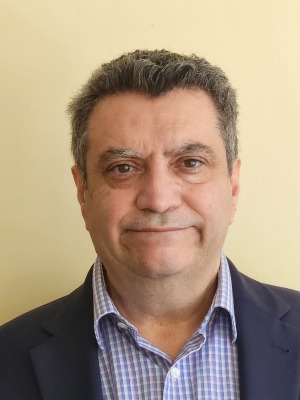By Faramarz Farhoodi
It’s very clear that current healthcare systems are unsustainable — with a global shortage of clinicians who are already overworked, overtired and overwhelmed. This could be the early warning signs of a medical tsunami and therefore it is essential that we call upon innovation to steady the waters.
Artificial Intelligence (AI) has the potential to transform healthcare from a system that is overwhelmed with ‘sick care’ to a system that is supported by preventative technology that alleviates demand on healthcare services — something we describe as ‘smart care’.



Ad Statistics
Times Displayed: 2756
Times Visited: 25 Fast-moving cardiac structures have a big impact on imaging. Fujifilm’s SCENARIA View premium performance CT brings solutions to address motion in Coronary CTA while delivering unique dose saving and workflow increasing benefits.
Of course, we cannot ignore the fact that over 50% of the world’s population lacks access to essential healthcare services and despite technology facilitating remote engagement with patients, there is still a huge issue with capacity. To solve this, we must create technology that is not only groundbreaking, but also accessible to the masses. Only then will we see the benefits of a healthcare system thriving at the intersection of technology.
Does artificial intelligence hold the answer?
As humans, we are naturally wired to only seek help once an issue has occurred. In the context of medicine, this is often when symptoms are prevalent and illnesses are in the latter stages of the disease cycle. Of course, this demands more resources and medical intervention than if the issue had been spotted much sooner. This scenario represents the need for prevention over cure and AI can help facilitate that.
Most diseases follow a cyclical pattern that provides antecedent signals at each stage of development. At the start, these signals will be fewer and weaker, however, as the disease progresses, these will become more frequent and more intense. As mentioned above, it’s at this stage that most people will seek help, however, monitoring vital signs such as blood oxygen, heart rate and sleep patterns, can offer a valuable insight into the human body and encourage intervention earlier in the cycle.
But what do these figures mean and how are you supposed to interpret them?
To most people, stats and figures presented to them by their latest smartwatch would bear little to no meaning beyond “I’m exercising” and “I’m resting”. However, an AI system composed of complex neural networks combined with Cognitive AI is capable of monitoring this data and flagging anomalous data that could represent a bigger issue.
Replicating cognition
Once you have an abundance of biodata and a technology capable of algorithmically processing this data to identify trends and patterns — you are still missing one key ingredient — cognition.

